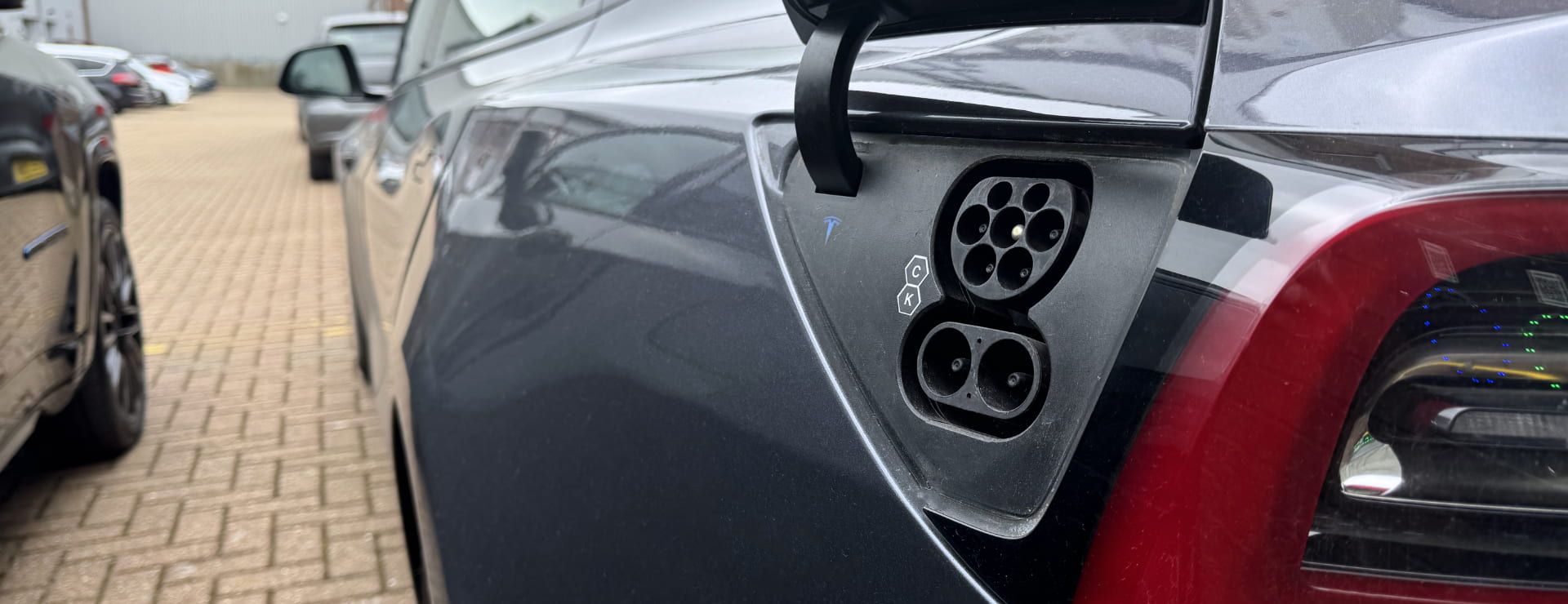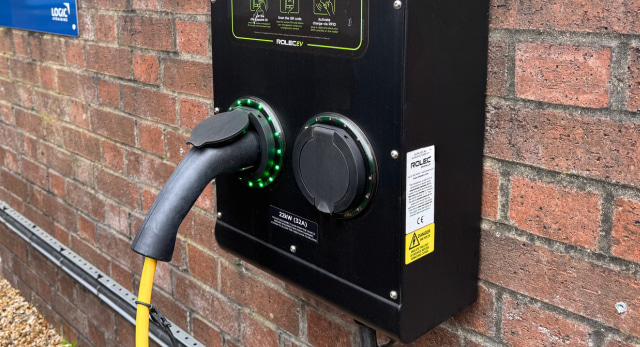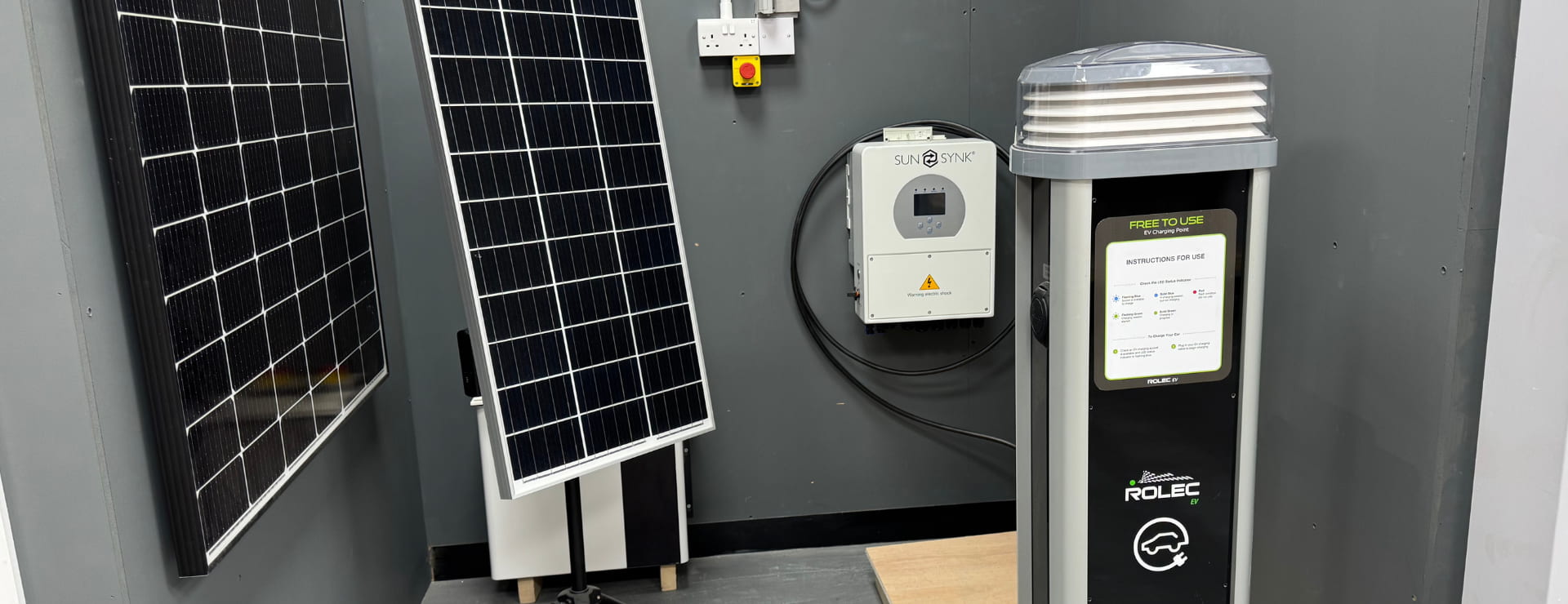Thinking about getting into the electric vehicle (EV) revolution? Or perhaps you’re an electrician eyeing up the demand for EV charger installation? Either way, you’re in the right place. We'll cover everything you need to know about EV charger installation and the wider EV charging infrastructure in the UK. We’ll cover the nuts and bolts, the business case, the future, and, crucially, how you can get trained up to become an EV charging installation professional.
What is EV Charger Installation?
EV charger installation is the process of fitting a dedicated charging point for electric vehicles at homes, workplaces, or public spaces. While it sounds simple, it’s a skilled job—one that’s rapidly growing in demand as the UK accelerates towards a greener, electric future.
Why is EV Charger Installation Important?
- Convenience: No more queuing at petrol stations—charge at home, work, or on the go.
- Cost savings: Home charging is significantly cheaper than public charging.
- Future-proofing: As petrol and diesel cars are phased out, EVs will become the norm.
- Business opportunity: For electricians, this is a sector with serious growth potential.
Types of EV Chargers: Know Your Levels
Before you dive into installation, you need to know your charger types:
| Charger Type | Power Output | Typical Use | Charging Speed |
|---|---|---|---|
| Level 1 (3-pin plug) | 2.3kW | Emergency/occasional | 6-8 miles/hour |
| Level 2 (Home/Work) | 7kW-22kW | Home/workplace charging | 25-75 miles/hour |
| Level 3 (Rapid/DC) | 50kW+ | Public/rapid charging | 100+ miles/30 minutes |
Most home installations use Level 2 chargers, offering the best balance of speed and practicality.
The EV Charger Installation Process: Step-by-Step
1. Assessing the Site
- Location: Ideally, the charger should be as close as possible to where you park your car and your main consumer unit (fuse box).
- Power supply: Check if your existing electrical supply can handle the charger’s load. Upgrades may be needed for older properties.
2. Choosing the Right Charger
- Tethered vs Untethered: Tethered chargers have a cable attached; untethered require you to use your own cable.
- Smart features: Modern chargers can schedule charging, monitor energy usage, and integrate with solar PV.
- Brand and warranty: Go for reputable brands with solid warranties and support.
3. Getting Permission
- Planning permission: Not usually needed for home installations, but check if you’re in a listed building or conservation area.
- Landlord/leaseholder approval: Essential if you’re renting or in a flat.
4. Electrical Work
- Dedicated circuit: A new circuit from your consumer unit is required for safety.
- RCD protection: Residual Current Devices (RCDs) are a must for EV chargers—Type A, F, or B depending on the charger and installation.
- Earthing: Some chargers require their own earthing arrangements.
5. Physical Installation
- Mounting: Secure the charger to a wall or suitable post. Weatherproofing is essential for outdoor units.
- Cable routing: Run cables neatly and safely, minimising trip hazards and exposure.
- Testing: Once installed, the system must be thoroughly tested for safety and compliance.
6. Commissioning and Handover
- Demonstration: Show the user how to operate the charger and any associated apps.
- Certification: Provide all necessary electrical certificates and documentation.
How Much Does EV Charger Installation Cost?
The cost of installing an EV charger at home in the UK typically averages around £1,000, although this figure can drop to as little as £650 if you qualify for a government grant, such as the EV Chargepoint Grant. This price generally includes both the charger itself and the standard installation by a qualified electrician. Factors influencing the final price include the type of charger selected, the complexity of the installation, and the specific requirements of your property. For example, if your home’s existing electrics need upgrading to support the charger, this will add to the overall cost.
For workplace installations, the cost per charger tends to be higher, usually ranging from £1,000 to £1,500. The total expense depends on several variables, such as the make and model of the charger, the number of units being installed, and the complexity of the site, particularly the distance from the electricity supply and whether any additional groundwork is needed. Businesses may also be eligible for government support through schemes like the Workplace Charging Scheme, which can help offset some of these costs.
Additional costs can arise if the installation requires extra work beyond the standard setup. For instance, if the charging cable needs to be run underground, heavy equipment is generally needed and will cost more. Other potential extras include consumer unit upgrades or remedial electrical work to bring your property up to the necessary safety standards. It’s always advisable to get a detailed quote from your installer to ensure you’re aware of all possible expenses before proceeding.
Government Grants & Incentives
The UK government is keen to accelerate EV adoption, with a range of grants and funding options:
- EV Chargepoint Grant: Up to £350 off the cost of a home charger for eligible properties.
- Workplace Charging Scheme: Grants for businesses to install charging points.
- Local EV Infrastructure (LEVI) Fund: £381 million allocated to local authorities to boost local charging options.
- Rapid Charging Fund: £70 million to support ultra-rapid chargers at motorway service areas.
For the latest figures, eligibility criteria and application process, check the official government guidance.
Public vs Home Charging: What’s the Difference?
| Feature | Home Charging | Public Charging |
|---|---|---|
| Cost per kWh | Lower (off-peak tariffs) | Higher (especially rapid) |
| Convenience | Charge overnight, at home | Need to find a charger |
| Speed | 7kW-22kW (typical) | Up to 350kW (ultra-rapid) |
| Access | Private (for your use) | Shared (may be busy/occupied) |
| Installation | Requires a qualified electrician | No installation needed for user |
Most EV drivers do the bulk of their charging at home or work, with public chargers used for top-ups and long journeys.
The UK’s EV Charging Infrastructure: The Big Picture
How Many Chargers Are There?
The UK’s EV charging infrastructure has seen remarkable growth in recent years, and according to Zapmap, there are over 79,000 public charge points across the UK as of April 2025, with numbers rising rapidly year on year. This rapid expansion is set to continue, with the government targeting an ambitious 300,000 public charge points by 2030, a figure that would make the UK’s charging network almost five times larger than the number of petrol stations currently in operation. The surge in installations is evident across the country, with more than 1,900 new devices added each month in early 2024, up from an average of 1,400 per month in 2023.
Types of Public Chargers
- Destination chargers: Found at supermarkets, gyms, and car parks.
- On-street chargers: For those without driveways.
- Rapid/ultra-rapid chargers: At motorway services and key routes.
Regional Distribution
The regional distribution of chargers, however, remains uneven. London continues to lead the way, boasting the highest concentration of chargers with 234 devices per 100,000 people. Scotland also stands out, with 103 chargers per 100,000 people, while Northern Ireland lags behind at just 32 per 100,000. The government is addressing these disparities through initiatives like the Local Electric Vehicle Infrastructure (LEVI) fund, which aims to boost charger numbers in underserved regions and ensure a fair transition to electric transport.

Why Train as an EV Charger Installer?
The UK’s EV market is booming. Every new EV on the road needs a charger, and every charger needs a qualified installer. Here’s why now is the perfect time to upskill:
- Massive demand: The government’s push for net zero means millions of chargers will be needed by 2030.
- Good rates: Installation can command £45–£60 per hour, or £1,000+ per job.
- Career security: As petrol and diesel cars fade out, EV expertise will only grow in value.
How to Become an EV Charger Installer
Becoming a qualified EV charger installer is an excellent career move as the UK’s electric vehicle sector rapidly expands. Typically, you’ll need a solid background in electrical installation, most commonly a Level 3 NVQ Diploma in Electrotechnical Services or an equivalent qualification, alongside up-to-date knowledge of the 18th Edition Wiring Regulations (BS 7671). Once you have these core credentials, the next step is to complete a specialist EV charger installation course, such as those accredited by LCL Awards, City & Guilds, or EAL. These courses cover everything from site assessment and charger selection to installation, testing, and compliance with the IET Code of Practice for EV Charging Equipment Installation.
Hands-on experience is a crucial part of the training, ensuring you can safely and efficiently assess installation sites, connect chargers, and test your work. Many installers also choose to join a Competent Person Scheme (CPS), such as NICEIC or NAPIT, which allows self-certification and demonstrates professionalism to clients and employers. Understanding government grants and funding schemes, like those from OZEV, is also important so you can advise customers on available financial support.
At Logic4training, we offer the industry-leading EV charging installation course designed for both experienced electricians and those new to the sector. Our training covers regulations, safety standards, installation best practices, smart charging technology, and real-world, hands-on experience. Successful candidates can even be registered on Rolec’s national installer database and meet the requirements for OZEV grant scheme registration, opening up even more opportunities in this fast-growing field. If you’re ready to future-proof your career, visit our EV charging course page for details on dates, prices, and how to get started.
Key Installation Requirements & Best Practices
Regulatory Compliance
EV charger installations in the UK must strictly adhere to the IET Wiring Regulations (BS 7671), specifically Section 722, which addresses the unique hazards and requirements of electric vehicle charging equipment. Compliance ensures installations are safe, reliable, and meet the latest industry standards. A key requirement is the use of appropriate Residual Current Devices (RCDs); Type B RCDs offer the broadest protection against both AC and DC residual currents, making them the preferred choice for many installations, though it’s essential to follow the manufacturer’s guidance for each specific charger. All installation work must be carried out by a qualified electrician, and any new installation, addition, or alteration must comply with the current edition of BS 7671, regardless of the age of the existing installation.
Safety First
Safety should always be the top priority during EV charger installation. The supply must be isolated before any work begins, and installers should use suitable personal protective equipment (PPE) and test equipment throughout the process. Proper site assessment, cable management, and grounding are crucial to prevent electrical hazards and ensure the long-term reliability of the system. Once the installation is complete, clear user instructions and safety information should be provided to the end user, supporting safe and effective operation from day one.
Smart Features & Integration
Modern EV chargers increasingly feature smart technology, including app-based control, scheduled charging, and real-time energy monitoring, which can help users save money and reduce their carbon footprint. Integration with solar PV systems is also becoming more popular, allowing drivers to charge their vehicles using renewable energy and further future-proofing their investment. By following these best practices and keeping up to date with the latest guidance, such as the IET Code of Practice for EV Charging Equipment Installation, installers can deliver safe, compliant, and forward-thinking solutions for every customer.
Business Opportunities in EV Charging
The EV charging sector isn’t just about installation. There are opportunities in:
- Maintenance and servicing: Keeping chargers running smoothly.
- Consultancy: Advising businesses and local authorities on infrastructure.
- Sales and distribution: Supplying chargers and accessories.
EV Charging Infrastructure: Challenges & Solutions
Challenges
The UK’s rollout of EV charging infrastructure faces several uniquely British challenges. One of the most significant is the stark regional disparity in charger availability, with so-called “charging deserts” particularly prevalent outside major cities. Around 9.3 million households, mostly those relying on street parking, do not have a public EV charger within a five-minute walk, and in areas like North-east Derbyshire and Redditch, access rates are as low as 1.3% and 3.2% respectively. In contrast, affluent London boroughs such as Westminster and Kensington and Chelsea enjoy near-universal coverage. This unevenness is influenced by historical town layouts that often lack off-street parking, making installation more complex and costly.
Grid capacity and connectivity present another major obstacle. The UK’s charging network is heavily reliant on the National Grid, but bottlenecks and capacity constraints are slowing progress. Many charge points are stuck in interconnection queues, with some operators waiting for permission to connect over 600 planned chargers. Upgrading local distribution networks is costly and administratively burdensome, and the National Grid estimates that EVs will require an extra 120 TWh of renewable energy production to meet future demand. These grid limitations can lead to charging slowdowns, higher tariffs during peak periods, and even the risk of reduced charging capabilities during busy times. All of which threaten the profitability and reliability of the charging infrastructure.
Local authorities, who are pivotal in supporting EV uptake and infrastructure planning, also face barriers such as limited funding, complex procurement processes, and the challenge of identifying suitable sites for new chargers. While some councils have made significant progress, others lack a coherent strategy for EV charging rollout, further widening the gap between regions. The combined effect of these challenges is a fragmented and sometimes unreliable charging experience for UK drivers, especially outside urban centres.
Solutions
To address these challenges, the UK government and local authorities are ramping up investment and policy support. Funding, like the £20 million On-Street Residential Chargepoint Scheme (ORCS), needs to be prioritised to ensure that residents without private parking can reliably charge their vehicles. Local authorities are being encouraged to leverage schemes like this, with over 140 projects already benefiting and thousands more charge points planned for installation across towns and cities. Proactive regions such as Brighton, Coventry, and Portsmouth have shown that targeted strategies, supported by government funding and local partnerships, can dramatically improve charger coverage, achieving rates of up to 83% in some areas.
On the technical side, solutions include diversifying energy sources for charging (such as integrating solar PV and battery storage), investing in grid upgrades, and using smart charging technology to better manage demand and reduce peak-time pressure. Streamlining the permitting process and encouraging collaboration between local authorities, energy providers, and private operators will also help accelerate deployment. Ultimately, ensuring equitable access to charging infrastructure across the UK will require sustained investment, innovative solutions, and a coordinated national strategy that leaves no community behind as the country transitions to zero-emission transport.
Logic4training: Your Partner in the EV Revolution
The shift to electric vehicles is transforming the UK’s roads and creating a huge demand for skilled EV charger installers. Whether you’re an experienced electrician looking to upskill or just starting out in the industry, there’s never been a better time to get involved in this fast-growing sector. With generous government funding, evolving technology, and a nationwide push for greener transport, the opportunities are only set to increase.
If you want to future-proof your career and be at the forefront of the EV revolution, Logic4training is here to help. Our EV charging installation course is designed to give you the knowledge, practical skills, and industry insight you need to succeed. Join the next generation of installers,
FAQs
Do I need planning permission to install a home EV charger?
Usually not, unless you live in a listed building or conservation area.
How long does installation take?
Most home installations take around half a day, but complex jobs may take longer.
Can I install an EV charger myself?
No. Installation must be carried out by a qualified electrician for safety and compliance.
What’s the difference between tethered and untethered chargers?
Tethered chargers have a cable attached; untethered chargers require you to use your own cable.
Are there grants available for EV charger installation?
Yes, the EV Chargepoint Grant offers up to £350 off for eligible homes, and there are grants for workplaces too.
How much does it cost to install an EV charger?
Typically £1,000, or £650 with a grant. Extras like trenching or consumer unit upgrades can add to the cost.
What qualifications do I need to become an EV charger installer?
You need to be a qualified electrician and complete a recognised EV charging installation course, like those offered by us.
Where can I find more information or book a course?
Visit our EV charging course page or check out our blog for more guides and tips.










